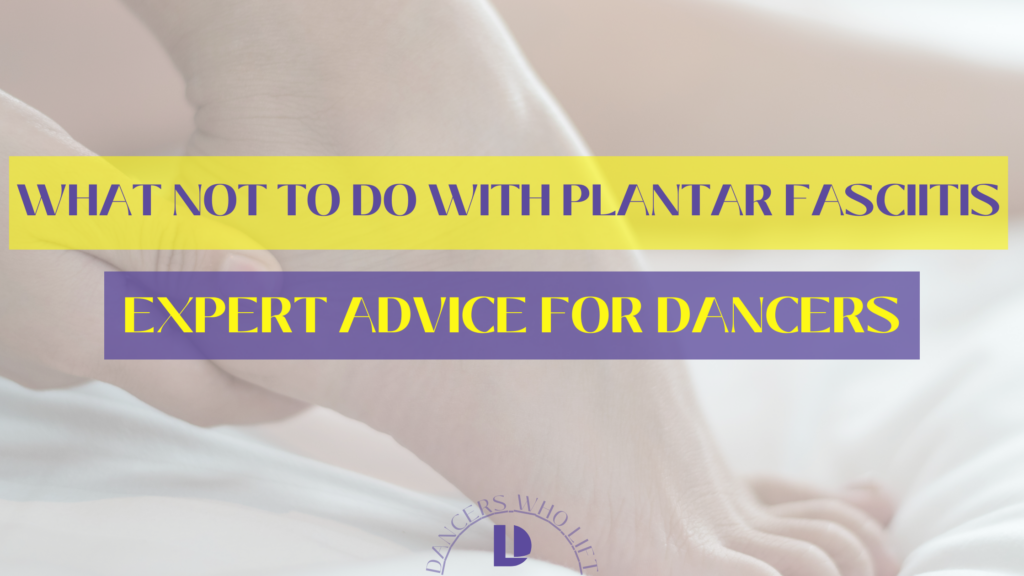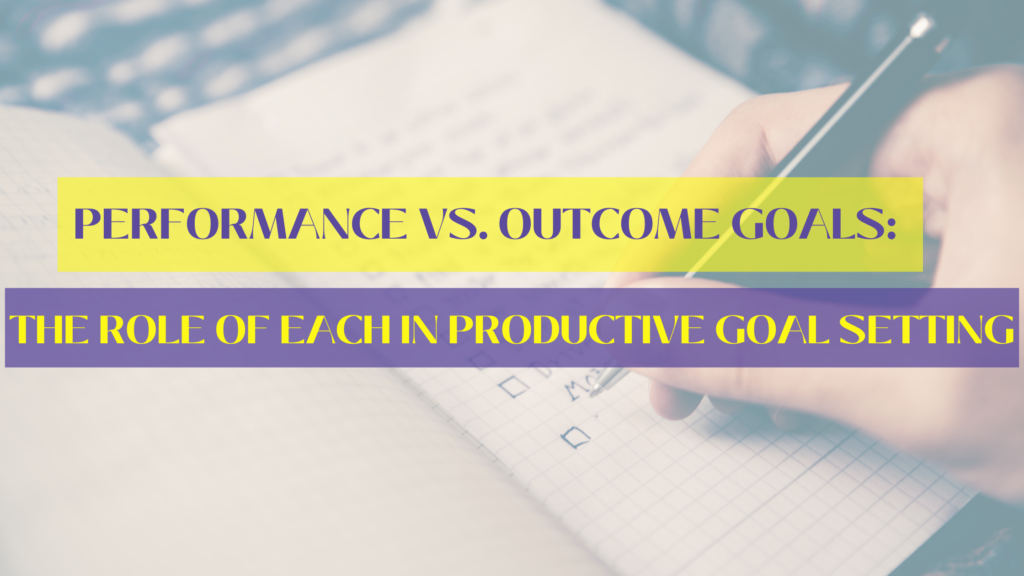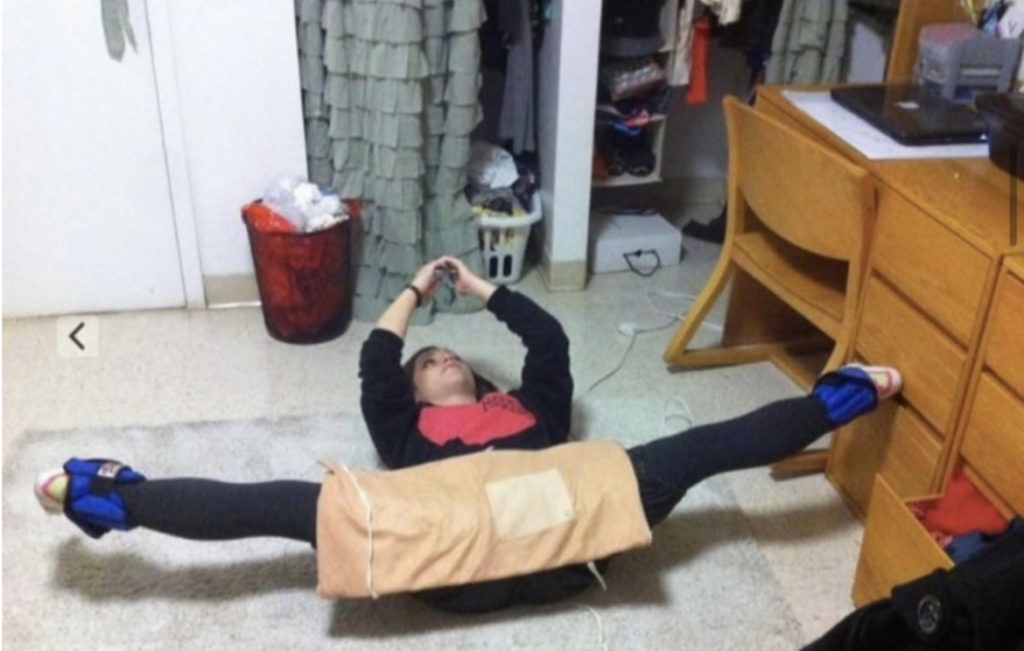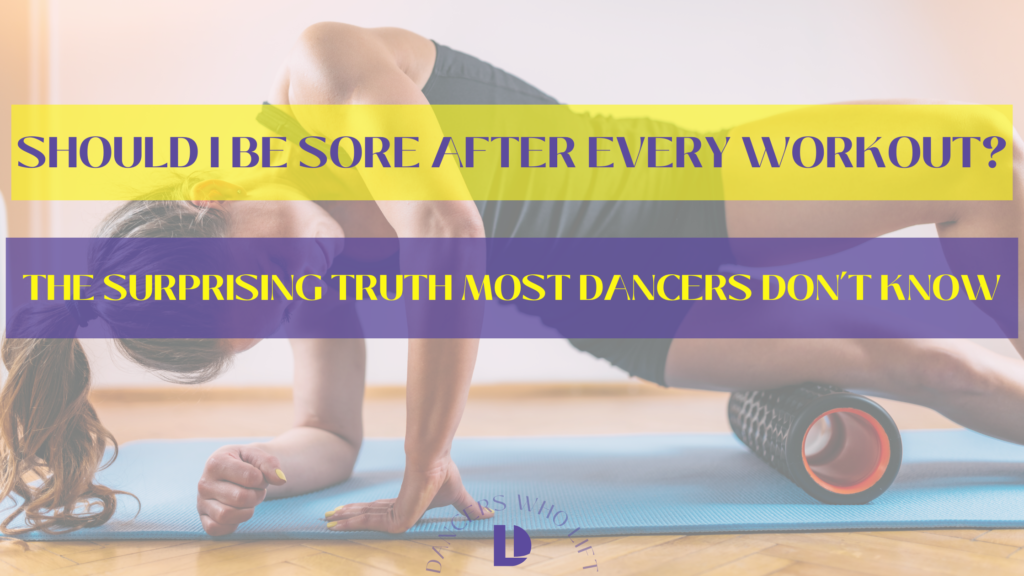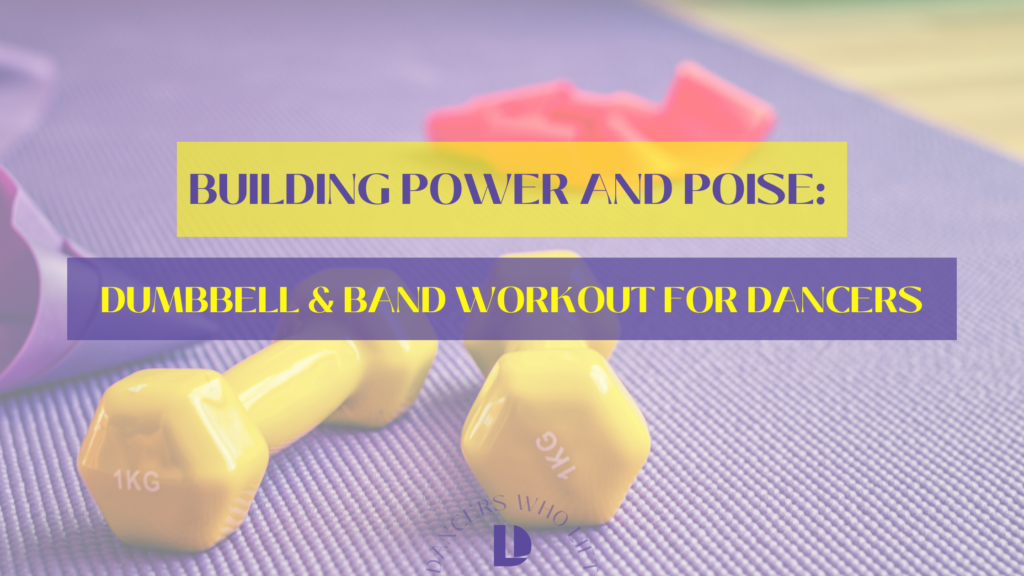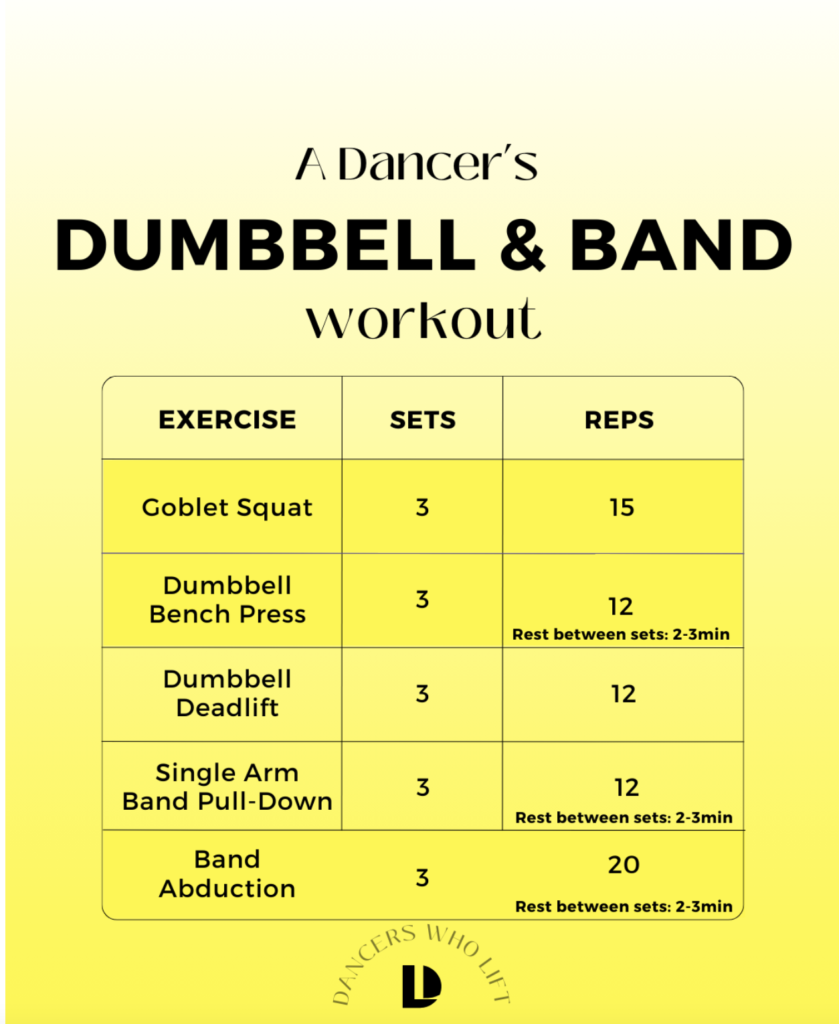Plantar Fasciitis is a common overuse injury among dancers. And it’s no surprise as tight calf muscles, high arches, and unsupportive shoes are often the culprits of this type of foot pain. (I’m looking at you ballet flats.) That’s why it’s so important to learn what not to do with plantar fasciitis; so you can get back on your feet and dancing in no time!
Don’t keep going–Take time to rest!
When discussing what not to do with plantar fasciitis, the most important thing you must learn is to take time to rest.
Dancers are very good at working through pain. However, since plantar fasciitis tends to be an overuse injury, “working through the pain” will only make the injury worse.
Observing a period of rest (no, not just one icing session, a couple hours 👀) and icing the foot within that period will get the inflammation under control enough to begin some PT.
But if you keep dancing, that inflammation will only increase causing more pain and requiring a longer rest period to decrease that inflammation.

Don’t wear high heels; Don’t wear zero drop sneakers.
Footwear is a big contributor to plantar fasciitis pain. So reconsidering what fashions you’re sporting is a big part of learning what not to do with plantar fasciitis.
High heels require a lot of your arches. And, because the inflamed tissues associated with plantar fasciitis run right through your arches, putting undue pressure on them is not ideal. So, while you’re recovering, opt for flats instead.
Now this might be surprising, but due to the heel pressure associated with plantar fasciitis, zero drop shoes can actually exacerbate the pain experienced in the heel.
The sweet spot for alleviating pain from plantar fasciitis is a slight elevations of the heel (3cm or less). This relieves the pressure on the heel without pushing that pressure elsewhere.
Don’t stand or sit with your foot in same position for too long:
Standing for long periods of time keep your heel in what’s called “dorsiflexion” (a flexed foot).
Take a look at this image:
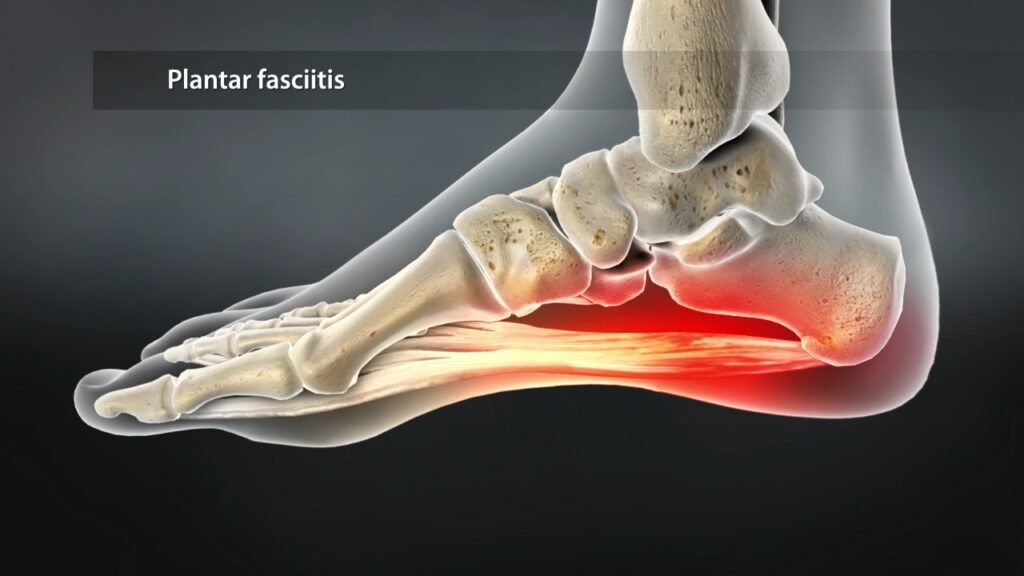
This is the position your foot is in when sitting or standing on your feet. You can see how keeping your feet in this position for long periods of time could trigger some pain in that inflamed tissue.
Bottom line? Take breaks from standing and sitting with your feet in the same position. During these breaks take time to work through pointing and flexing your foot, working through your PT stretches, and icing.
Don’t skip your stretches:
If you rest without consciously taking time to do your stretches, you’re likely going to flare up again once you return to exercising at your normal level. These stretches help to create more ankle mobility and release the tight muscles in the underside of your foot.
These exercises should become a staple in not only your PT but preparation for classes, rehearsals, and shows!
While painful, luckily plantar fasciitis can largely be managed with PT and rest, meaning you’ll be back out dancing like a fool in no time!
Did you find any of these tips helpful? Give us a follow @dancerswholift on Instagram and give this interview with Coach Amber in Dance Magazine about Plantar Fasciitis.

